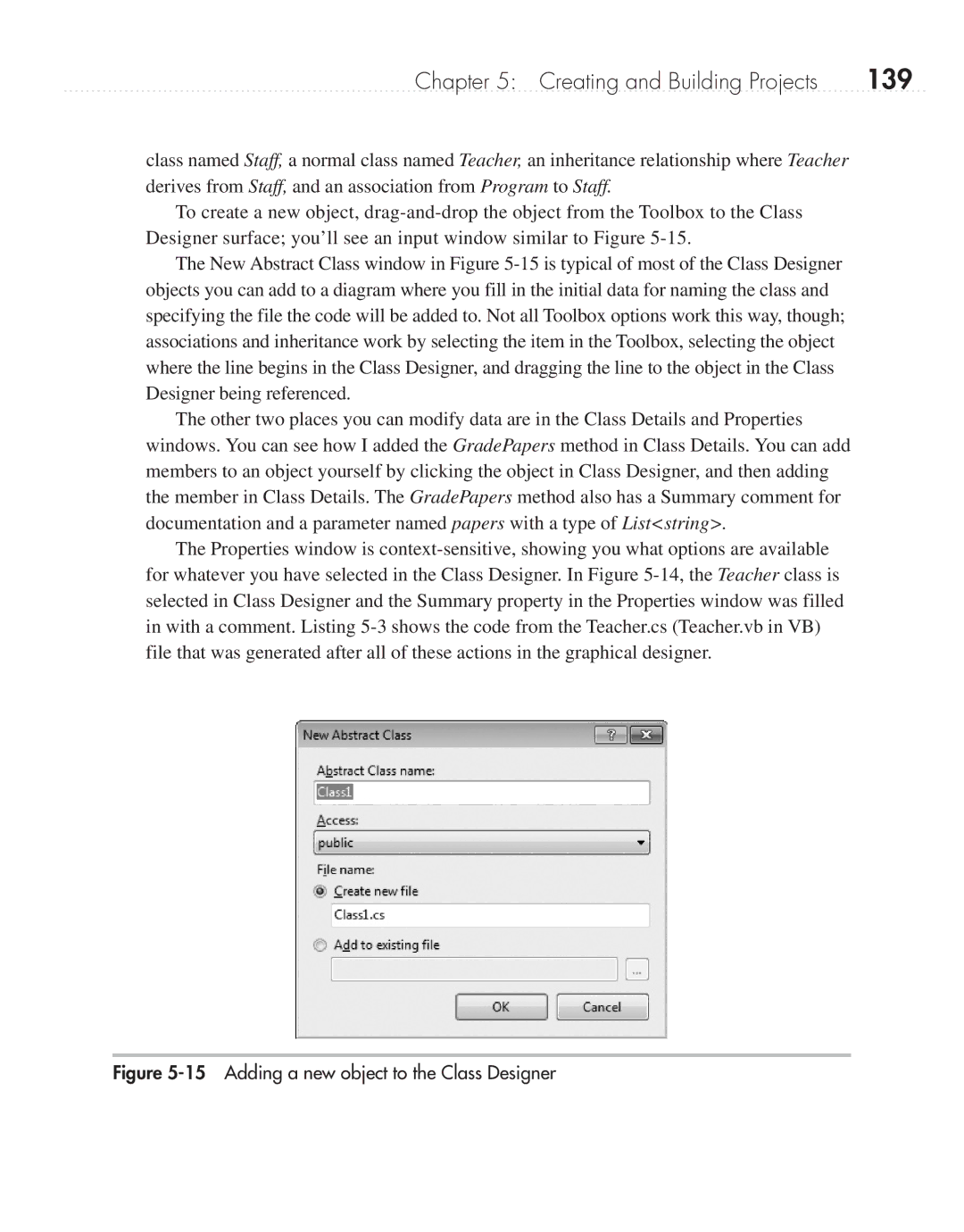
Chapter 5: Creating and Building Projects | 139 |
class named Staff, a normal class named Teacher, an inheritance relationship where Teacher derives from Staff, and an association from Program to Staff.
To create a new object,
The New Abstract Class window in Figure
The other two places you can modify data are in the Class Details and Properties windows. You can see how I added the GradePapers method in Class Details. You can add members to an object yourself by clicking the object in Class Designer, and then adding the member in Class Details. The GradePapers method also has a Summary comment for documentation and a parameter named papers with a type of List<string>.
The Properties window is
